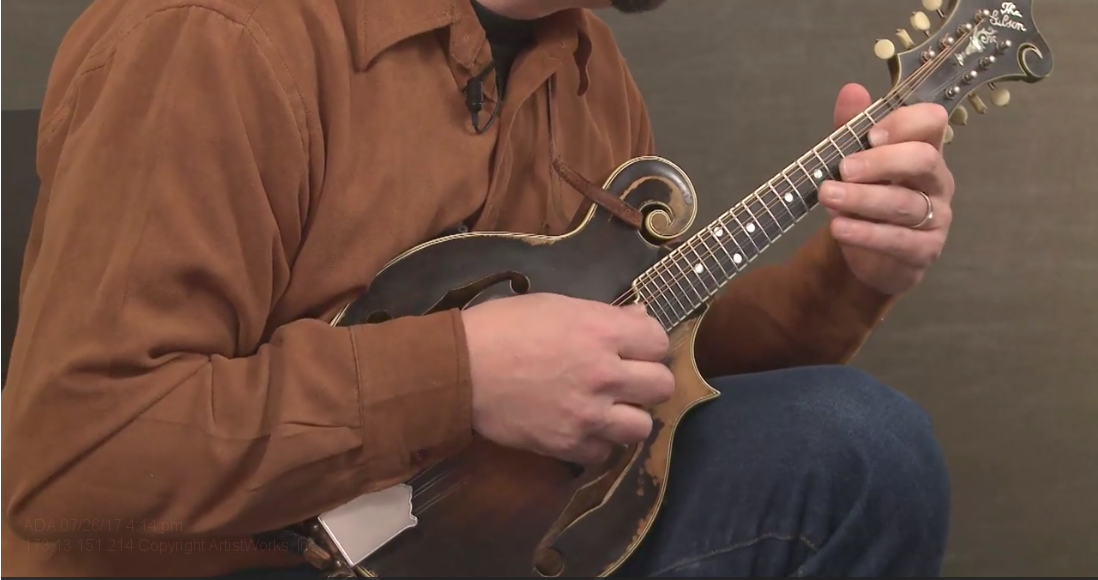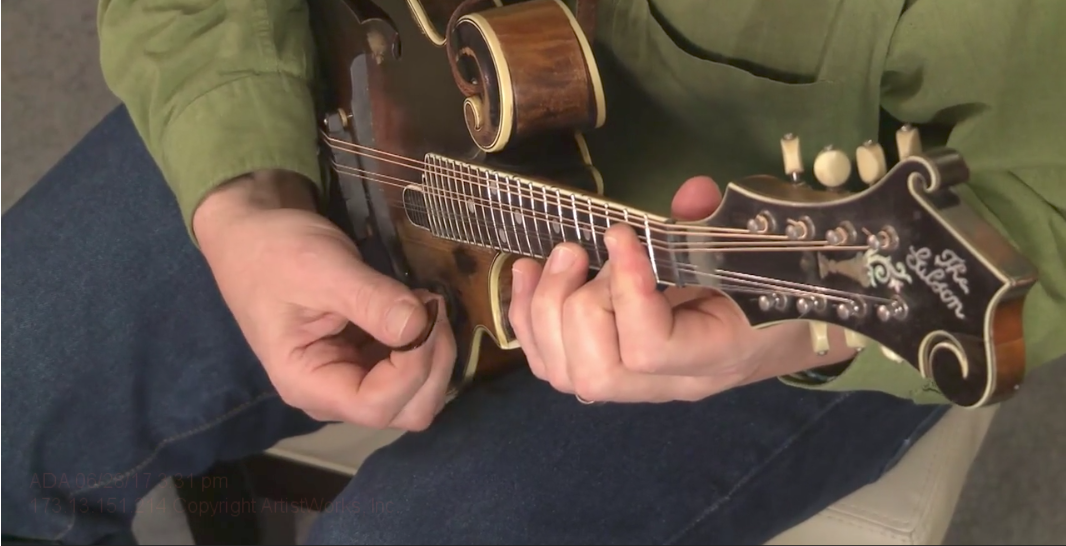ArtistWorks Live: Talking Mandolin with Mike Marshall
In this month’s episode of ArtistWorks Live we sit down with the mandolin man himself, Mr. Mike Marshall. He joined us from his home in Germany where he'd just gotten home from playing a show at a local cafe with the great Caterina Lichtenberg. He was still in the mood to play music, and this one features a lot of great tunes! Also if you’ve never heard a mandocello, you’re in for a treat. As always, we had a lot of fun and there were some great questions coming in from those of you who were tuned in live.
Mandolin Scales with Four Fingers

If you're into playing bluegrass, it's a good idea to learn about four finger mandolin scales.
As with any string instrument, learning to use all of your fingers is going to be an essential task. Although all four fingers aren’t always needed, there are times when using the 4th finger will make it easier to shift positions and to properly execute hammer-ons and pull-offs. Economy of motion is particularly important when key changes require large position shifts or when the other three fingers are fretting other notes.
New Mandolin Lesson: Transcribing a David Grisman Solo
We just added a new mandolin lesson that's all about David Grisman Solo for "I Ain't Broke (But I'm Badly Bent)". Mike was recording a video response for a student here and decided to make a complete lesson out of the topic - "how to transcribe a solo", in this case a Dawg solo. This 4-part lesson was recently added to Additional Tunes & More section and is over 40 minutes of new material! Click here to go to part 1.
How to Use Open Mandolin Chords

Let's talk about open mandolin chords. Some of the first chords you learn when playing any stringed instrument are open chords. As their name implies, these chords include open strings, or strings that are not being fretted. Later on, you’ll learn how to barre them, eliminating those open strings that might not fit well into a new key.
These types of chords, typically known as closed or barre chords, all use open chords as their foundation, so it’s important to learn these before attempting anything more complex.







